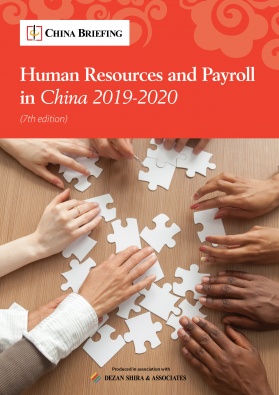Regional HQ in Singapore, New Forex Regulations in Vietnam – China Outbound

Our weekly round up of other news affecting foreign investors throughout Asia.
ASEAN BRIEFING
Why Setting Up in Singapore Makes Sense for Business in ASEAN
Singapore has long been a preeminent destination for setting up a regional headquarters to pursue business opportunities across ASEAN and Asia.
The country’s status as a preferred investment destination in Asia can be attributed to its legal and tax regimes – one of the most business and investor-friendly in the world – as well as its financial system, which is highly integrated with international financial markets.
This business landscape has enabled international investors to take advantage of Singapore’s access to some of the largest combined free trade areas through ASEAN, which include ASEAN-China, ASEAN-Hong Kong, and the ASEAN-India free trade agreements (FTAs).
INDIA BRIEFING
Register Your Business for the GST in India
GST registration enables goods and service providers to collect GST from their customers.
Under India’s GST law, it is mandatory for businesses and individuals to register for the GST if they are supplying, producing, or trading in goods with an aggregate value of supply exceeding INR 40 lakh (US$57,496) per financial year.
For businesses and individuals engaged in the supply of services, the aggregate turnover limit is INR 20 lakh (US$28,748) per financial year. For entities involved in the supply of goods in a special category state, the aggregate turnover limit for GST registration is INR 10 lakh US$(14,374) per financial year.
RUSSIA BRIEFING
How Russian Manufacturers Can Access China, India and the EU Markets via the EAEU Free Trade Agreements
The Eurasian Economic Union is a huge free trade bloc, comprising Armenia, Belarus, Kazakhstan, Krygyzstan, and Russia. Situated between China and the European Union, it is home to 183 million people, and has an annual GDP (PPP) of about US$5 trillion.
China has double tax treaty agreements with each of the EAEU member states.
The EAEU has also signed off Free Trade Agreements with Iran, Serbia and Vietnam, while negotiations with Cambodia, Egypt, India, Singapore and Thailand are all underway.
SILK ROAD BRIEFING
Free Trade Zones on China’s Belt and Road Initiative: The Eurasian Land Bridge
A major route for China’s Belt and Road Initiative is the ”Road” section, which stretches along its main corridor from Xinjiang Province in western China, through Kazakhstan, across to Azerbaijan, Georgia, and onto Turkey and the European Union.
Known as the Eurasian Land Bridge, the route is the fastest way from China to Europe.
Over 6,300 trains made the journey from China overland to Europe last year, while the journey time from Shanghai in eastern China to Istanbul in Turkey via Kazakhstan, Azerbaijan, and Georgia, including two sea transit segments, for arrival in Istanbul takes just 14 days.
Foreign Investors in Vietnam: New Regulations on Foreign Exchange Management
The Vietnamese government’s new regulations on foreign exchange took effect on September 6. Circular No 06/2019/TT-NNN (“Circular 6”) now governs foreign exchange in foreign investment activities in the country.
As per Vietnam law, any transaction that is related to direct or indirect investment transaction by a foreign investor must be implemented by an investment capital account opened in a licensed bank which is permitted to trade and supply foreign exchange.
About Us
China Briefing is produced by Dezan Shira & Associates. The firm assists foreign investors throughout Asia from offices across the world, including in Dalian, Beijing, Shanghai, Guangzhou, Shenzhen, and Hong Kong. Readers may write to china@dezshira.com for more support on doing business in China.
- Previous Article Productivity Issues When Re-Positioning Your China Business for Southeast Asian Manufacturing
- Next Article Setting Up a PCLG in Singapore, India’s Corporate Tax Cuts – China Outbound

























